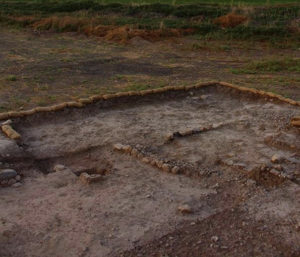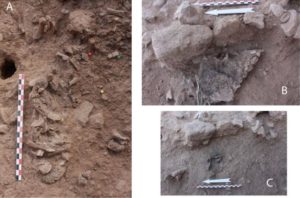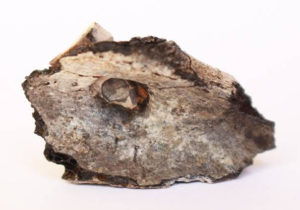
PLOS and CNRS—Ancient people in the Near East had begun the practice of intentionally cremating their dead by the beginning of the 7th millennium BC, according to a study published August 12, 2020 in the open-access journal PLOS ONE by Fanny Bocquentin of the French National Center for Scientific Research (CNRS) and colleagues.
Excavations at the Neolithic site of Beisamoun in Northern Israel have uncovered an ancient cremation pit containing the remains of a corpse that appears to have been intentionally incinerated as part of a funerary practice. These remains were directly dated to between 7013-6700 BC, making them the oldest known example of cremation in the Near East.
The gender of the human remains found inside remains unknown. What is known is that the individual was a young adult injured by a flint projectile several months prior to their death in spring some 9,000 years ago. Preserved due to it being buried, the pit represents the oldest proof of direct1 cremation in the Middle-East. An international team lead by CNRS archaeo-anthropologist Fanny Bocquentin2 with aid from PhD candidate Marie Anton and several experts in animal, plant, and mineral remains, discovered and studied the bones found inside the pyre. An analysis of the clay used to coat the inside of the pit showed the 355 bone fragments, some of which were burnt, were exposed to temperatures reaching 700°C. The position of the bones and the preserved joints seem to indicate the body was placed seated onto the pyre and was not moved during or after cremation. Whether used as fuel, as ornamentation, or as a scent, siliceous traces indicated the presence of flowering plants, which made it possible to identify the season the person died. In addition to the exceptional pyre pit, the cremated remains of five other adults were discovered at the site. They dated back to the same period as burials whose traces were discovered among the ruins of abandoned dwellings.
This early cremation comes at an important period of transition in funerary practices in this region of the world. Old traditions were on the way out, such as the removal of the cranium of the dead and the burial of the dead within the settlement, while practices like cremation were new. This change in funeral procedure might also signify a transition in rituals surrounding death and the significance of the deceased within society. Further examination of other possible cremation sites in the region will help elucidate this important cultural shift.
Bocquentin says: “The funerary treatment involved in situ cremation within a pyre-pit of a young adult individual who previously survived from a flint projectile injury—the inventory of bones and their relative position strongly supports the deposit of an articulated corpse and not dislocated bones.” She adds, “This is a redefinition of the place of the dead in the village and in society.”
________________________________

A section of the Beisamoun site (Israel) where the pyre pit is visible. © mission Beisamoun
________________________________

Picture of bones in situ: A. Segment of axial skeleton: ribs and vertebrae exposed in the middle of the structure. B. Right coxal in situ; preserved almost complete by a piece of collapsed mud wall (see Fig 2D). C. Four right pedal proximal phalanges found directly under the right coxal. Bocquentin et al, 2020 (PLOS ONE, CC BY)
________________________________

Flint point thrust inside a burnt shoulder blade © mission Beisamoun
________________________________
Article Source: Adapted from news releases from PLOS and the CNRS.
*Bocquentin F, Anton M, Berna F, Rosen A, Khalaily H, Greenberg H, et al. (2020) Emergence of corpse cremation during the Pre-Pottery Neolithic of the Southern Levant: A multidisciplinary study of a pyre-pit burial. PLoS ONE 15(8): e0235386. https:/
________________________________
Advertisement





